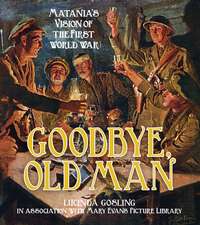Paul Klee: The Visible and the Legible
Autor Annie Bourneufen Limba Engleză Hardback – 20 iul 2015
The fact that Paul Klee (1879–1940) consistently intertwined the visual and the verbal in his art has long fascinated commentators from Walter Benjamin to Michel Foucault. However, the questions it prompts have never been satisfactorily answered—until now. In Paul Klee, Annie Bourneuf offers the first full account of the interplay between the visible and the legible in Klee’s works from the 1910s and 1920s.
Bourneuf argues that Klee joined these elements to invite a manner of viewing that would unfold in time, a process analogous to reading. From his elaborate titles to the small scale he favored to his metaphoric play with materials, Klee created forms that hover between the pictorial and the written. Through his unique approach, he subverted forms of modernist painting that were generally seen to threaten slow, contemplative viewing. Tracing the fraught relations among seeing, reading, and imagining in the early twentieth century, Bourneuf shows how Klee reconceptualized abstraction at a key moment in its development.
Bourneuf argues that Klee joined these elements to invite a manner of viewing that would unfold in time, a process analogous to reading. From his elaborate titles to the small scale he favored to his metaphoric play with materials, Klee created forms that hover between the pictorial and the written. Through his unique approach, he subverted forms of modernist painting that were generally seen to threaten slow, contemplative viewing. Tracing the fraught relations among seeing, reading, and imagining in the early twentieth century, Bourneuf shows how Klee reconceptualized abstraction at a key moment in its development.
Preț: 309.34 lei
Nou
Puncte Express: 464
Preț estimativ în valută:
59.19€ • 61.80$ • 48.99£
59.19€ • 61.80$ • 48.99£
Carte disponibilă
Livrare economică 15-29 martie
Livrare express 01-07 martie pentru 52.38 lei
Preluare comenzi: 021 569.72.76
Specificații
ISBN-13: 9780226091181
ISBN-10: 022609118X
Pagini: 256
Ilustrații: 32 color plates, 35 halftones
Dimensiuni: 178 x 229 x 25 mm
Greutate: 0.97 kg
Ediția:1
Editura: University of Chicago Press
Colecția University of Chicago Press
ISBN-10: 022609118X
Pagini: 256
Ilustrații: 32 color plates, 35 halftones
Dimensiuni: 178 x 229 x 25 mm
Greutate: 0.97 kg
Ediția:1
Editura: University of Chicago Press
Colecția University of Chicago Press
Notă biografică
Annie Bourneuf is assistant professor of art history at the School of the Art Institute of Chicago.
Cuprins
Acknowledgments
Note on Klee’s Sequential Numbering System
Introduction
1 The “Painter-Draftsman”
2 Seeing and Speculating
3 A Refuge for Script
Epilogue: Old Sound
Notes
Index
Note on Klee’s Sequential Numbering System
Introduction
1 The “Painter-Draftsman”
2 Seeing and Speculating
3 A Refuge for Script
Epilogue: Old Sound
Notes
Index
Recenzii
“Bourneuf’s cogent and scholarly discussion illuminates Klee’s critical engagement with the ideas and practices of other artists, including Kandinsky, van Doesburg and Moholy-Nagy. . . . This book offers a salutary lesson for artists who mistakenly imagine painting to be simply about technique and making and who have constructed an illusory division between practice and theory. Bourneuf effectively demonstrates how Klee’s artwork is itself a critique of theories and practices, and she conjures up for the reader the muscularity of artists’ thinking about art in that period.”
“Bourneuf's analysis of Klee’s most important and prolific creative phase reinforces [an] understanding of the artist as a highly intelligent strategist. . . . Recommended.”
"Scholars have been drawn to the literary in Klee's work. Annie Bourneuf’s beautifully produced book provides one of the most detailed studies on this theme. There are fresh insights on every page. . . . Bourneuf gives a superb account of Klee’s profound and endlessly fascinating imagination."
“With analyses that are wonderful to read and brilliantly contextualized, Paul Klee: The Visible and the Legible shows how complex and, within the years from 1916 to 1923, how variable Klee’s artistic positions are.”
“For the leading art critics and theorists of Klee’s day, to mix poetry with visual art, to integrate words with images, to conflate reading with looking, was to be vilified as ‘literary.’ His resistance to this orthodoxy and his deft, thoughtful, ingenious negotiation of this difficult terrain in the early years of his maturity is the subject of Bourneuf’s impressive book. No one has previously treated this issue, so critical for understanding Klee’s complex and idiosyncratic art, with the rigor, sensitivity, and sheer intellectual zest that Bourneuf has brought to it. Her book will have a decisive impact not only on Klee scholarship but on modern art studies more generally.”
“By far the historically most thorough and perceptive investigation of the role of reading and writing in Klee’s work, this study is an excellent contribution to Klee scholarship and certainly the best book on him available today. Bourneuf introduces a significant number of little-known passages from Klee’s own writings or early criticism into the discussion, and her interpretations of individual works are masterfully crafted.”
“Klee continues to fascinate us as a painter, printmaker, and draftsman, but we are also drawn to his activities as a teacher, theorist, and writer. Bourneuf has provided a wonderfully provocative and nuanced reading that highlights the sometimes ambiguous and even ambivalent tension that arose for Klee at the intersection of these activities. This is a sophisticated work that contributes to the scholarship on Klee, the history of abstraction, and the historiography of modernism as well as the critical issues that frame image making/writing and reading/seeing.”








